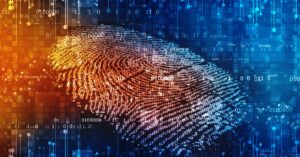
Reconciling Public and Private IP Addresses to Aid Law Enforcement
With just over 4 billion unique, public addresses in the IPv4 scheme and north of 10 billion devices today, many Communication Service Providers (CSPs) assign
In the coming years, AI is expected to dramatically accelerate the evolution of lawful intelligence, giving law enforcement agencies (LEAs) the ability to efficiently draw insight from data at unprecedented
Quantum Computing may enable communications that do not travel across a network in the conventional sense and endanger traditional encryption methods, carrying critical implications for lawful intelligence.
Preventing illicit trafficking is a daunting task for border security agencies. AI-powered Computer Vision and location intelligence enhance security, reduce costs, and close surveillance gaps.
Effective lawful intelligence solutions do more than just ingest and analyze data. They build evidential narratives compelling enough for court that are backed by a fully auditable chain of custody.
Encryption and OTT apps limit the value of lawful eavesdropping tools like wiretaps, but mobile networks offer a powerful engine for new insights: real-time geographical awareness using high-accuracy location.

With just over 4 billion unique, public addresses in the IPv4 scheme and north of 10 billion devices today, many Communication Service Providers (CSPs) assign

The lawful interception and mediation programs that communications service providers (CSPs) are mandated to integrate into their platforms fulfill a social responsibility as well as

Encrypted Over The Top (OTT) messaging platforms such as WhatsApp, iMessage, Signal, and Telegram have seen extraordinary adoption over the past 10 years. WhatsApp in

Today’s lawful intelligence measures draw on a long legacy of intercepted communications. And while the days of simple wiretaps are long gone, the foundational idea

The massive, ever-growing role of social networks in human communication comes with a unique set of hazards. In particular, the layer of concealment provided by

As the volume, variety, and velocity of data potentially available to lawful intelligence grows exponentially, the control mechanisms that govern its interception become more critical.

Distributed 5G network topologies have forever forced mediation for lawful interception out beyond the network core. As computing moves closer to the subscriber, mediation nodes

Just a tiny fraction of cryptocurrency transactions are related to criminal activity, but they are still a critical mechanism for payment associated with crimes that

Technology developments for telecommunications networks often add more challenges than benefits for lawful intelligence operations. Separating the noise from the signal in massive 5G data

It’s an irony of this moment that, even as 5G networks increase the amount of data on public networks by orders of magnitude, the technology
THE DATA SILO DILEMMA FOR LAW ENFORCEMENT
How to Ingest, Filter and Query 5G Volumes
Webinar Presented by Kevin McTiernan